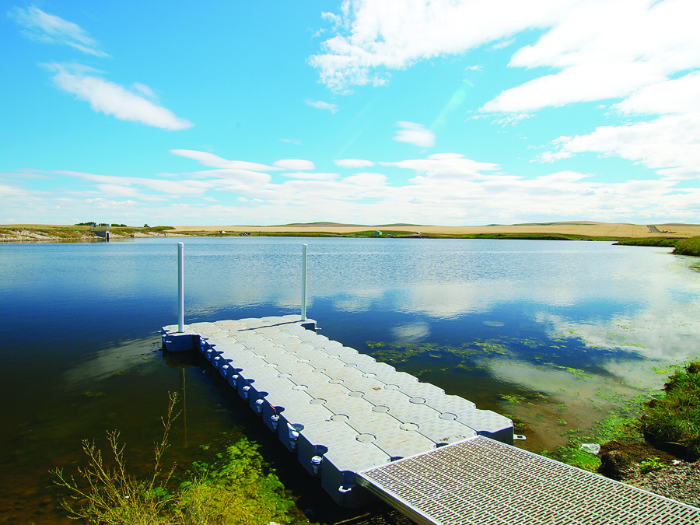
A blue-green algae bloom in the Severn Creek Reservoir near the Village of Standard is not a threat to drinking water.
Alberta Health Service issued an advisory on Thursday that blue- green algae is present in the water.
A report on another local media website implies that the Rosebud Reservoir may be carrying a harmful bacteria in the water.
The Mail cautions residents of the area to treat this report for what it is, as there is no known body of water know as the Rosebud Reservoir, and the reference is to the Severn Dam, situated north of Standard. Standard residents, nor Rosebud residents do not get water supply from this dam.
Alan Larsen, Mayor of Standard confirms that the Village of Standard has it own water treatment plant and obtains water from the Bow River via the Western Irrigation District.
Deputy Reeve of Wheatland County Ben Armstrong confirms that the Hamlet of Rosebud draws groundwater for its system and it is treated before it is sent to any homes or businesses.
While this water is not a threat to potable water supplies, residents or visitors are urged by Alberta Health Services to:
- DO NOT DRINK WATERdirectly from, or allow your pets to drink water directly from, this reservoir. Boiling this contaminated reservoir water will not remove toxins. Provide an alternative source of drinking water for pets and livestock.
- DO NOT SWIM OR WADEor allow your pets to swim or wade in this reservoir.
- AVOID CONTACTwith blue-green algae along the shoreline.
- DO NOTfeed whole fish or fish trimmings from this reservoir to your pets.
- People may wish to limit their own consumption of whole fish and fish trimmings from this reservoir, as it is known that fish may store toxins in their liver.
- People can safely consumefish fillets from this reservoir.
According to a release, blue-green algae can produce a toxin (poison) that can cause serious illness to animals or humans who drink or have skin contact with water containing this toxin. Although weather and wind conditions can cause algae blooms to move from one location in the reservoir to another, the toxin can stay in the water even after algae have moved or disappeared.